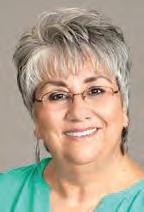


















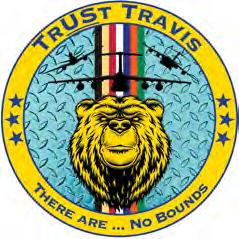

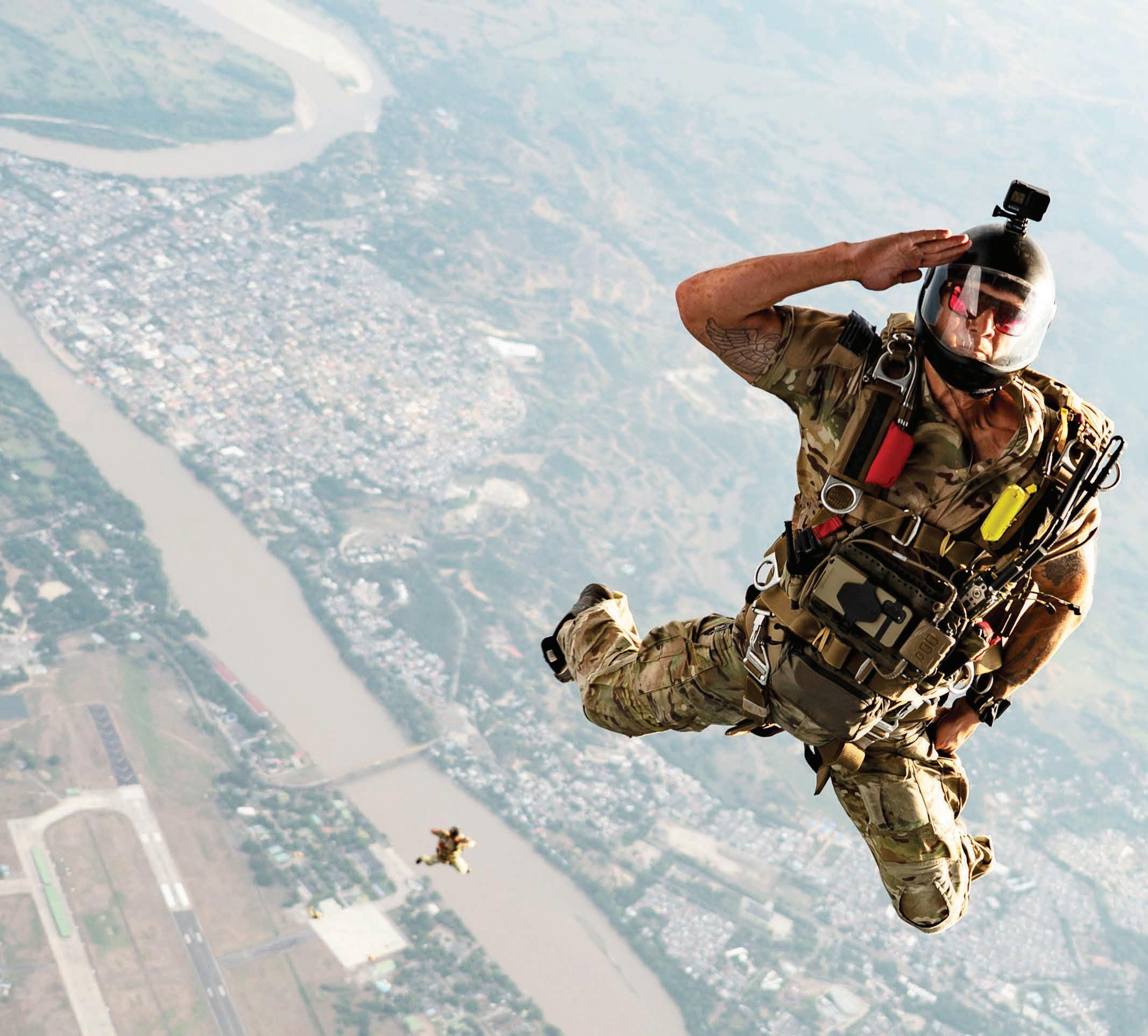






A pararescuemen exits an HC-130J Combat King II while taking part in a free-fall jump during Relámpago de los Andes at Palanquero Air Base, Colombia, Aug. 6. During RDLA,
U.S. Air Force and Colombia Aerospace Force members conducted training with each other to share tactics and techniques.

Royal Australian Air Force, showcasing the U.S. and its allies’ commitment to a free and open Indo-Pacific region.
SENIOR A IRMAN A IDAN THOMPSON AIR MOBILITY COMMAND PUBLIC AFFAIRS
JOINT BASE PEARL HARBOR-HICKAM, Hawai’i — Air Mobility Command has sustained operations as part of the U.S. Air Force’s 2025 Department-Level Exercise series across the Indo-Pacific region validating its ability to project and sustain combat power, alongside allies and partners, in support of a free and open Indo-Pacific region.
The 2025 DLE series is a firstin-a-generation effort to conduct operations in a contested, dynamic environment to deter competitor aggression where able, and to defeat
threats to national security when necessary.
AMC approached the DLE series through a unified and dominant approach to global mobility through the seamless integration of other commands.
hosts Polish delegation, strengthens tech defense ties
THOMAS BRADING AFOSI PUBLIC AFFAIRS
SAN FRANCISCO — Amid a shifting security landscape in Europe, the Office of Special Investigations hosted a delegation from Poland’s Military Counterintelligence Service in California, May 12-17.
The weeklong event, led by Special Agent Kevin Alexander, the AFOSI Attaché at the U.S. Embassy in Warsaw, aimed to strengthen NATO coordination around defense innovation and counterintelligence.
“Engaging with our allies in person is essential,” Alexander said. “It was an opportunity for our Polish partners to see how the tech protection mission plays out on the ground. Not just from us, but from hearing it directly from the people we work with every day in places.”
Alexander added that building trust like this is best done firsthand.
“The people we visited aren’t just contacts, they’re partners,” he said. “When a company has a security concern, we want them calling us. That only happens if we’ve earned their trust.”
To ensure the rapid movement of people and cargo into theater, lead logistics planners like Casey used time-phased force deployment data to schedule and track movements into theater. The curation and upkeep of this documentation ensured personnel and cargo were able to move in a timely manner.
“My job is to ensure people make it into their operating location and then have a way home,” Casey said. “If a logistical challenge arises where members are not able to move
“Within the 2025 DLE series, we incorporated the total force, ACC, AETC, AFGSC, AFMC, AFRC, AFSOC, AMC, TRANSCOM, PACAF and Guard components,” said Senior Master Sgt. Jennifer Casey, AMC lead logistics planner. “It was essential to coordinating all of these moving pieces and ensure the 10,000 airmen and 1,200 short tons of cargo were properly aggregated to move into theater.”
See AMC, Page 3
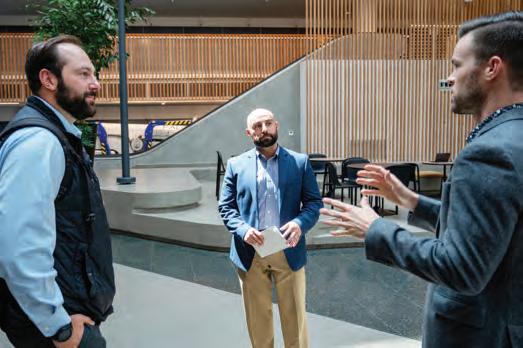
TRAVIS
FORCE BASE — Autho-
rized visitors and Department of Defense contractors at Army & Air Force Exchange service installations can enjoy tax-free meals at more than 1,600 Exchange restaurants and Express locations.
The Exchange’s restaurants and Expresses worldwide are open for anyone with installation access to enjoy dining in or takeout. Restaurants include Panda Express, Qdoba, Panera and more. Additionally, more than 650 self-serve 24/7 stores provide better-for-you options including salads, fruits and vegetables, protein bars, popular beverages and more.
“Civilian workers and visitors can feel free to grab a meal, beverage or
quick snack at the Express or Exchange restaurants –there’s no need to go off the installation,” Travis AFB Exchange’s Cathie Byrns said. “When civilians dine with the Exchange, they keep the benefit strong for those who serve as 100% of Exchange earn ings support military communities.”
All Exchange restaurants offer betterfor-you options as part of the Exchange’s BE FIT 360 program. “Healthier Choices, Healthier Life style” shelf tags easily identify these items at Express locations. Every Wednesday, an added perk is that direct-oper ated Exchange restaurants offer $2 off entrée salads priced at $4 or more.
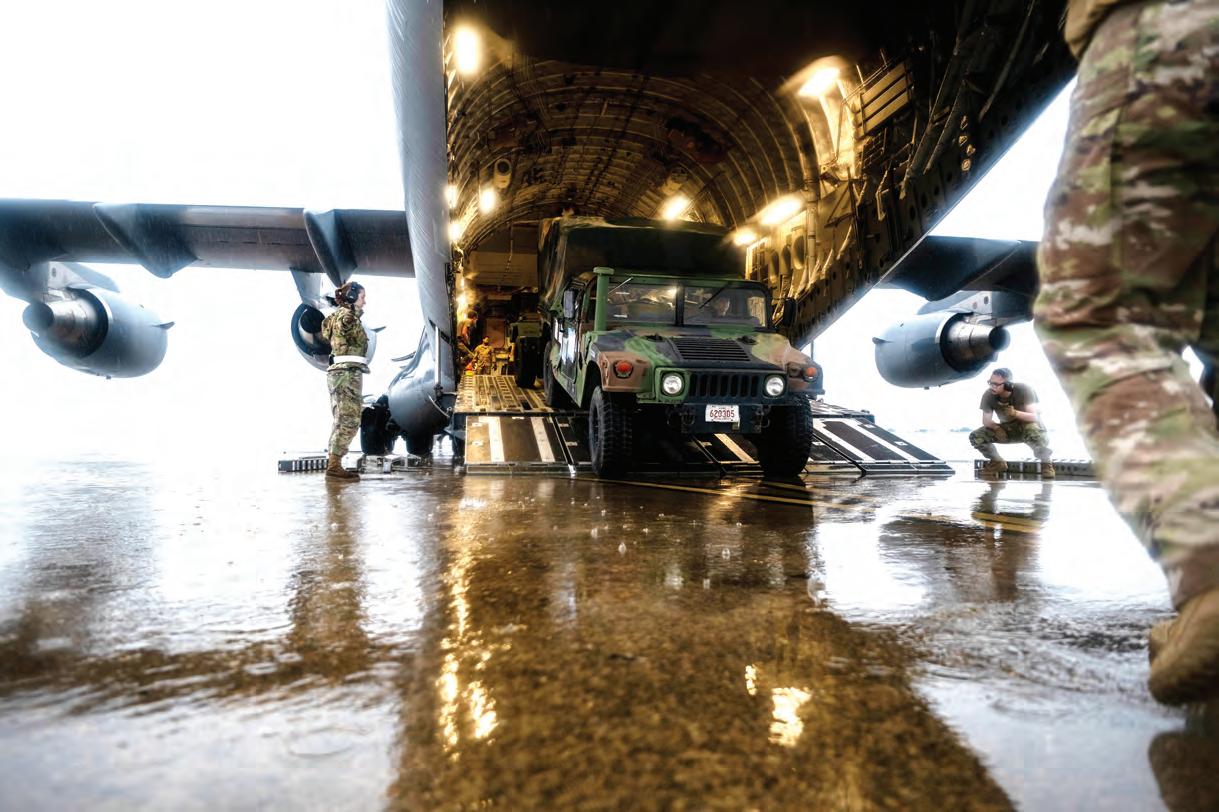
In OCONUS locations, visiting shopper privileges vary and are controlled by overseas commanders in accordance with the host country’s/U.S. international agreements.
621st CRW combines C-208B Grand Caravan training with LZSOs
StAFF Sgt. Devin rumbAugh
HURST, N.J. — The 621st Air Mobility Advisory Group conducted a multi-faceted training event for Cessna C-208B Grand Caravan pilots and landing zone safety officers assigned to the 621st Contingency Response Group and the 818th Mobility Support Advisory Squadron.
KUNSAN AIR BASE, South Korea — Total force aircrews and mission planners successfully executed full-spectrum airlift operations across the Indo-Pacific theater, July 15-25.
“A lot of great things happened out here this week,” said U.S. Air Force Capt. Juan Nino, 621st CRG deputy chief of group operations. “We integrated with both the 621st AMAG
See Cessna, Page 4
The training event included bringing a contracted and privately owned C-208B to JBMDL, giving pilots assigned to the 621st AMAG and 818th MSAS an opportunity to operate the C-208B and conduct operations at landing zones, while also giving LZSOs assigned to the 621st CRG and 818th MSAS, an opportunity to train and maintain their currencies.

Serving Travis Air Force Base and the surrounding community 1250 Texas St., Fairfield, Calif. 94533 707-425-4646 | Fax 707-425-5924
Publishers: Foy S. McNaughton and T. Burt McNaughton Advertising Manager: T. Burt McNaughton Editor: Todd R. Hansen Layout : Aaron Rosenblatt
The routine training missions brought together C-17 Globemaster III aircraft crews from the 60th Air Mobility Wing, 437th Airlift Wing and 164th Airlift Wing, along with dozens of total force support personnel, to deliver more than 100 air delivery specialists across the 3,000-mile area of responsibility. The mission served to further develop joint and combined interoperability and enhanced the command and control capabilities of U.S. and Republic of Korea forces.
“We’re working with partner nations to showcase our aerial delivery capabilities,” said U.S. Marine Corps Gunnery Sgt. Leo Briseno, an air delivery operations chief participating in the training. “It demonstrates how we can resupply ground forces at multiple locations across the peninsula.”
Operating under short-notice taskings and complex regional conditions, aircrews coordinated closely with U.S. and ROK planning cells to meet mission timelines. The combined effort demonstrated the Air Force’s rapid global mobility and the critical role of airlift in supporting joint force


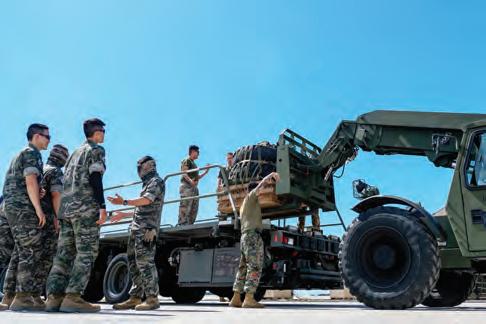
training ensures that everyone has the capability to respond to the full spectrum of operations, from contingency to humanitarian,” Briseno said. “Our partner nations have been instrumental in facilitating many of the opportunities we’ve had here. Our partners in South Korea have worked alongside us to showcase the joint effort.”
objectives.
U.S. Air Force Capt. Mitchell Kouns, a pilot assigned to the 21st Airlift Squadron, led the first training mission in the series. Supported by mission planners and ground teams, the aircrew transported essential personnel and cargo vital to the success of the international ground teams. Joint coordination ensured safe delivery despite challenging operational conditions.
“Flying these missions means trusting not just the aircrew, but also the planners and ground teams who keep us informed and prepared,” Kouns said. “That teamwork made all the difference when conditions changed.”
To maintain mission momentum, total force aircrews conducted extended operations using augmented crews. By rotating qualified personnel, the team lengthened duty days and reduced downtime between mandatory crew rest cycles. This approach enabled
nearly 24-hour airlift operations across four crews, which helped mitigate delays from uncontrollable factors such as weather and ensured critical personnel and equipment arrived on schedule.
“The complex and dynamic nature of this operation required creative mission planning at all levels,” said U.S. Air Force Capt. Robbie Lei, 21st AS mission planner.
“It was the tenacity and professionalism of aircrews and support teams that kept the mission on track.”
Once on the ground, U.S. and ROK Marine Corps units immediately transitioned into the field training phase where they exercised combined operations and tactical resupply across multiple drop zones and airfields. The exercise reinforced the strength of the U.S.–ROK alliance and its ability to project power across the IndoPacific region.
“Joint and combined

The success of this mission exemplified the strength of joint and combined interoperability between the U.S. Air Force, U.S. Marine Corps and ROK Marine Corps. Despite historic weather challenges and a complex operational environment, total force aircrews demonstrated the rapid mobility and resilience needed to deliver critical personnel and equipment when and where it matters most.
“The Air Force has provided all of the airlift capabilities that enabled us to conduct every single aerial supply to our ground forces,” Briseno said. “Without the U.S. Air Force, we would not have been able to showcase the joint effort required to execute an operation of this scale.”
The operation, a key step toward enhancing both joint and international relations, reinforced the readiness of U.S. and ROK forces to execute integrated missions across the Indo-Pacific theater. Even under pressure, the alliance proved its ability to project power and respond decisively in support of regional stability.
































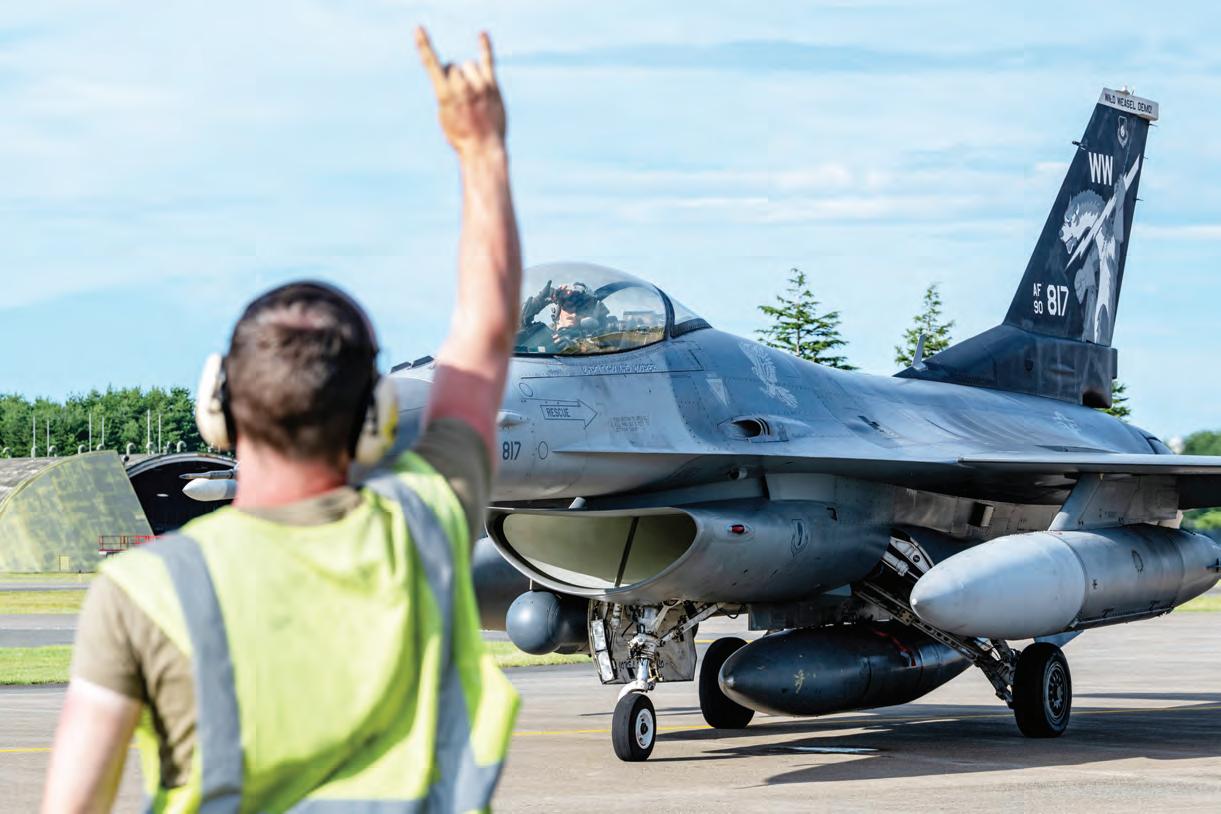
From Page 1 A
MISAWA AIR BASE, Japan — After four weeks of nonstop flying, fueling, loading and launching, Misawa Air Base’s 35th Fighter Wing is wrapping up exercise Resolute Force Pacific 2025, marking a milestone month of Agile Combat Employment, joint integration and combat readiness across the Indo-Pacific.
REFORPAC, the U.S. Air Force’s largest contin gency-response exercise in the Pacific, involved more than 12,000 service members and 400 aircraft across 50 locations span ning 3,000 miles.
“This exercise pushed our airmen to operate under pressure, think fast and adapt in real time,” said Col. Paul Davidson, 35th FW commander. “Misawa isn’t just a base, it’s a launchpad of joint and allied airpower. REFOR PAC proved our readiness to not only assemble and project combat airpower when and where needed, but also to sustain that projection from multiple points throughout Japan.”
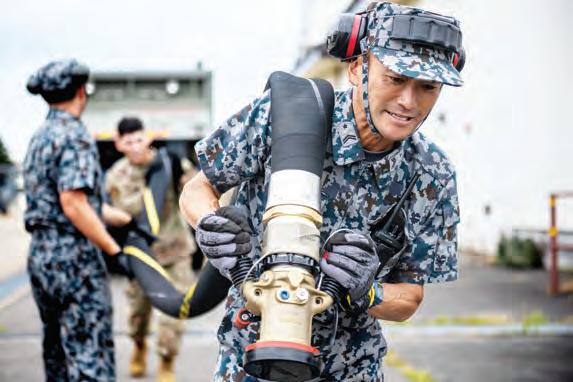
rapid succession, honing the lifesaving skills vital when every second counts.
Simultaneously, airmen teamed up with JASDF engineers to swiftly patch damaged runways under simulated attack, restoring airfield operations and ensuring the mission never missed a beat.
This relentless pace of coordinated action and sharp adaptability showcased the 35th FW’s adaptability to generate combat airpower anywhere and anytime.

At the start of the exercise, hundreds of temporary duty augmentees arrived at Misawa and quickly completed briefings on local procedures and contingency protocols, ensuring smooth integration into ongoing operations.
From dispersed sites, F-16 Fighting Falcons took to the sky as Misawa AB personnel launched and recovered jets with precision, executing rapidresponse missions under simulated threat conditions and maintaining a relentless tempo.
Behind the scenes, logistics and fueling teams orchestrated a nonstop flow of supplies and ammunition, moving pallets and equipment with clockwork efficiency. Traffic management and transient alert crews directed the movement of cargo on and off the flightline, turning aircraft around at lightning speed.
“Every team leaned in and kept the pace,” Davidson said. “Our airmen stepped up alongside our Japanese partners with total focus on the mission. That level of commitment is what drives real operational strength.”
Driven by that focus, airmen and mission partners sustained operations with discipline, speed and precision. Petroleum, oils and lubricants specialists from both the U.S. Air Force and Japan Air SelfDefense Force worked shoulder-to-shoulder,
fueling jets in high-speed operations that kept aircraft fueled and ready for immediate action. Nearby, aeromedical
crews ran through intense trauma drills with their Japanese counterparts, treating simulated wounds and evacuating patients in


according to the plan than I would be the one to get them to where they need to be.”
Once members successfully reached theater within established timelines, logistics and sustainment became the primary focus, as both concepts are key to ensuring the joint force remains agile and responsive.
Participating units executed Agile Combat Employment movements across various locations, which effectively demonstrated the U.S. Air Force’s ability to sustain operations at mission critical locations.
“Agile logistics is all about being flexible, fast, and precise,” said Lt. Col. James Vanderneck, C-130 MGFE commander for the DLE 2025 and 41st Airlift Squadron commander. “It means getting the right people and equipment to the right place at the right time, without being tied to a single base or traditional supply line. In Guam and throughout the Indo-Pacific region, we practiced by staging aircraft and cargo across multiple
locations, proving we can respond quickly even in contested or degraded environments.” This exercise was an opportunity for AMC to align its capabilities and resources with the overall objectives for exercises and realworld operations. This enabled airmen to be mission-ready and for wings deploy as cohesive units, expanding AMC’s reach beyond its traditional boundaries.
“Our success in this operation wasn’t just about speed or volume,” Vanderneck said. “It was about proving that no matter the circumstance, we can rapidly deploy and sustain our forces to ensure they maintain operational momentum.”
Joint logistics infrastructure, as demonstrated by the 2025 DLE series, is the backbone of successful operations by enabling efficient and scalable movement of cargo and personnel both within and between theaters.
AMC’s enhanced interoperability with the Total Force and collaboration with allies and partner nations, ensures the U.S. Air Force remains ready to project, maneuver, and sustain the joint force anytime, anywhere in support of national objectives.

“Training together builds the trust and teamwork we need to succeed,” Davidson said. “Working side by side with our Japanese partners helps us respond faster and smarter across an array of mission sets and makes us stronger as a team and region.”
As REFORPAC winds down, the 35th FW pivots to steady operations, harnessing the momentum forged during the exercise. Even as visiting exercise participants return home, the wing mission continues onward with training, accelerating readiness and strengthening regional partnerships, driving forward its mission to safeguard a free and open Indo-Pacific region.

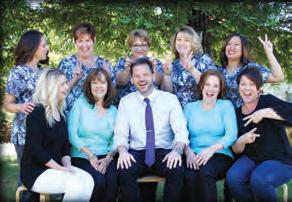









ROYAL AIR FORCE
MILDENHALL, England — Heartbeats
race and pulses rush as exhausted U.S. and British Army medics race to trans port a simulated injured troop to a field hospital for medical care. Time is not on their side, and the seconds tick away. In the pouring rain, they sludge through the muck, solving every possible problem during their training that might keep them from saving a soldier’s life.
U.S. airmen from 352nd Special Operations Wing participated in the bilateral exercise Mobility Serpent with British Army medics from the Colchester Garri son, 16th Medical Support Regiment at Sculthorpe Airfield, United Kingdom, July 21-25. This is the first medical response exercise of its kind, and it evaluates collaborative training between U.S. and U.K. military forces.
From Page 2
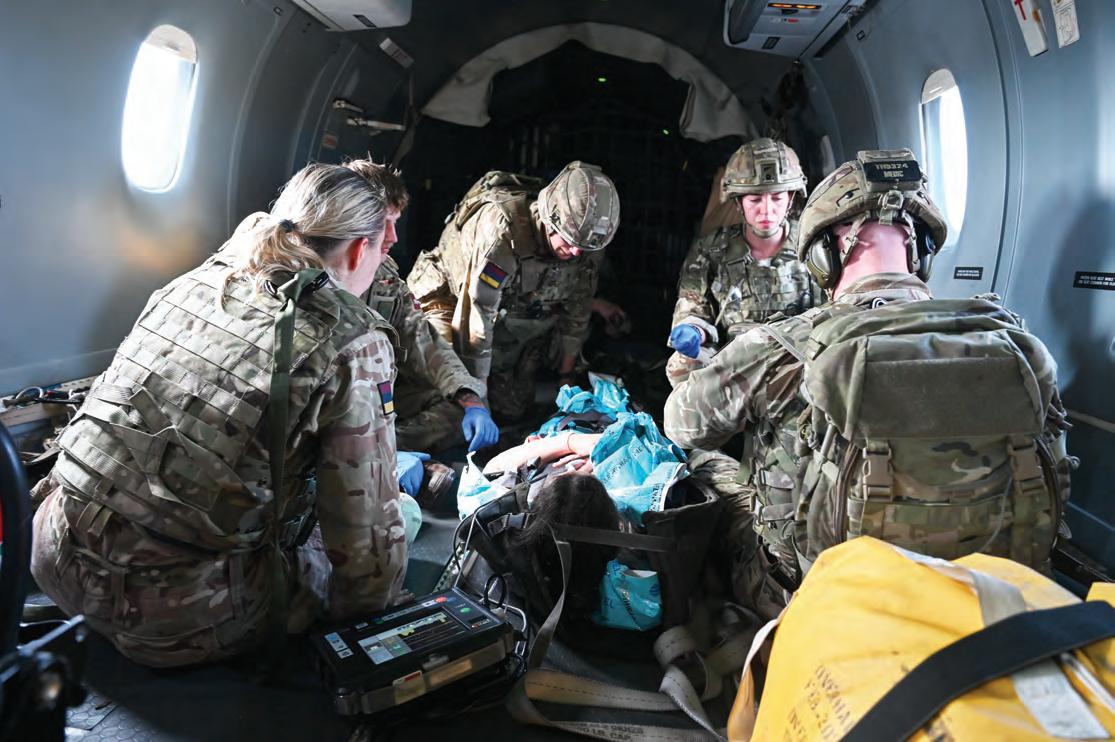
a medical
The
The purpose of Mobility Serpent is to test the capabilities of U.S. airmen and British Army soldiers in providing long-term field care within a simulated austere environment. The exercise provides an opportunity for both militaries to enhance communication and trust between U.S. Air Force aircrews and British Army medics.
“This bilateral training is the first time that we have conducted this kind of exercise with our British Allies,” said a U.S. Air Force medic from the readiness.”
It all started when the British Army medic team reached out to 352nd SOW medics on Royal Air Force Mildenhall, asking if they could meet up and learn about each other’s training routines.
“There is a vast difference between our programs,” said the 352nd SOW medic. “Not just in size, but in algorithms and words, so we are training together to create a joint platform of communication and interoperability that would be necessary during real-world operations.”
To make exercise Mobility Serpent a success, 352nd SOW medics and British Army medics discussed the difference in syntax and jargon, taking measures to break communication barriers.
“The goal of the exercise
“The hope is that we can work more effectively and efficiently in future operations together.”
For military medics, the training will include receiving bundles of medical supplies and equipment, establishing a field hospital, providing medical assistance, and effectively transporting injured personnel. Mobility Serpent also allows U.S. Air Force parachute riggers and joint airdrop inspectors to practice bundling and air dropping medical supplies and equipment to allied forces.
“We normally don’t build medical bundles to drop,” said a U.S. Air Force parachute rigger from 352nd SOW. “This exercise provides us the opportunity to sharpen our skills so that we can bundle different supplies and make successful drops to
u.S. A ir ForceS in europe
– A ir ForceS A FricA public A FFAirS
RAMSTEIN AIR BASE, Germany — U.S. Air Force
B-1B Lancer aircraft and allied fighter jets flew in formation over the Monument of Freedom in Riga, Latvia, Tuesday, as part of Bomber Task Force Europe, demonstrating NATO air forces’ ability to operate together anywhere, anytime.
The U.S. B-1B Lancer flew in formation with two Hungarian and Swedish Air Force JAS 39 Gripen fighter jets, demonstrating allied integration fostered during an ongoing
training deployment. The Hungarian Gripens are deployed to Šiauliai Air Base, Lithuania, in support of the NATO’s Air Policing mission.
“The security of the Baltic States and NATO’s Eastern flank is the cornerstone of the security of the entire Euro-Atlantic region,” Latvian Minister of Defence Andris Spruds said. “Such U.S. and allied flyover maneuvers clearly demonstrate NATO’s presence in the region, transatlantic unity, and commitment to collectively strengthen the security of the Baltic State region.”
During the deployment, U.S. bombers integrated
with Norwegian and other allied air forces to rehearse advanced tactics, share threat information in real time, and ensure the ability to maneuver freely even when access is contested. Each combined mission reinforces the coalition’s capacity to operate effectively in dynamic and high-threat environments.
Bomber Task Force Europe is part of a regular series of deployments that strengthen allied readiness, deepen integration, and demonstrate credible, combat-ready airpower in support of the collective defense of the homeland and the EuroAtlantic region.
and all-terrain
cles. After receiving the bundles, they were disassembled and used to build a
“The
the training,” said Nino. “This ensured that we are able to stay qualified and current through the duration of our alert cycle.” As this event marked the first time the C-208B was flown to JBMDL, airmen assigned to the 621st AMAG and CRG were required to find, identify and coordinate the use of useable airfields and landing zones within New Jersey that fulfilled the training requirements for LZSOs.
“We don’t get to work with the 621st AMAG very often, so it’s great to build up this community of ready warriors,” said Nino. “As we’re building partnerships, we’re identifying new training locations that can save us thousands of dollars every year.”







































Tech. SgT. Sean evanS AIR FORCE RESERVE COMMAND
ROBINS AIR FORCE BASE, Ga. — Patriot Medic 2025 took place August 6-12 at Fort McCoy, Wisconsin, and Grissom Air Reserve Base, Indiana. The multi-national exercise, led by the Air Force Reserve, included more than 9,000 personnel from all U.S. military services and international partners including Australian, British and Canadian forces. Patriot Medic is the Air Force Reserve’s premier medical readiness training event. It provides immediate medical certifications for service members and fosters long term capability development. The exercise also helps to prepare participants for future conflicts where they could face mass casualty events across varied terrain.
Maj. Gen. John Bartrum was the senior trainer for Patriot Medic 25. He is also the mobilization assistant to the Air and Space Force
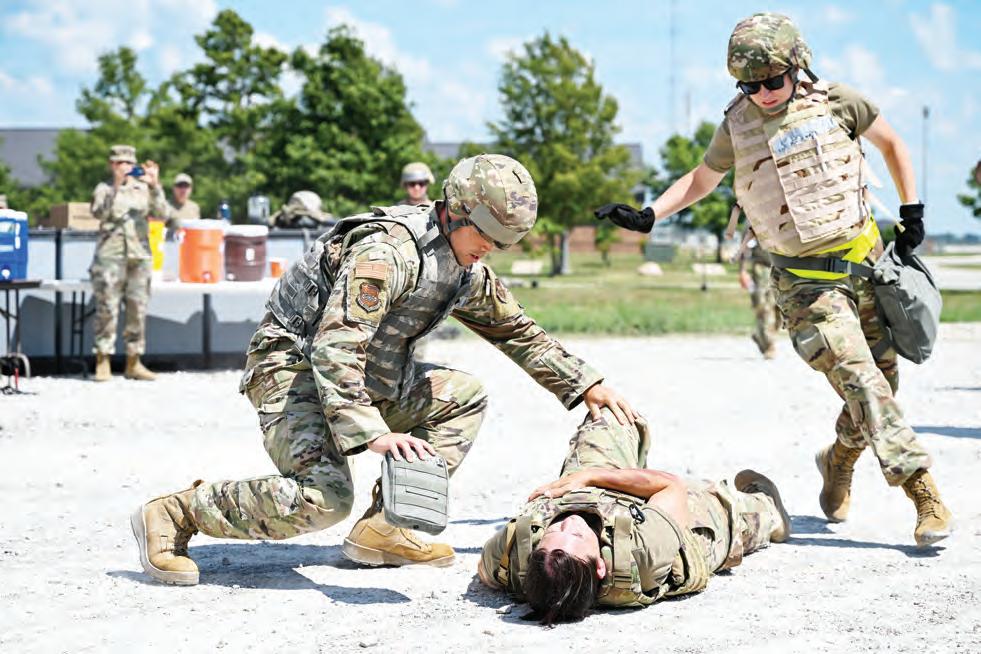
surgeon general where he directs Air Force Medical Service operations.
“We have to be ready to operate in a world of
constrained resources,” Bartrum said. “The exercise conditions Reserve Airmen for high stress operations. We build resil-
iency in peacetime so that we can respond and perform effectively in any environment.”
More than 100 Tacti-
cal Combat Casualty Care trainers and evaluators participated in the exercise and trained new trainers and other servicemembers
at the event. This helped some participants complete required deployment cycle TCCC Level 2 training certifications. Trainers also certified new training cadre that returned to their units with the ability to train more airmen.
“The enhancement [to the exercise] came from realism and stresses induced on our medics,” said Col. Ramil Codina, command surgeon for Air Force Reserve Command. “We prepare our medics as we fight in the field with combined forces operators.”
Codina also shared how the exercise validated the Reserve’s immediate readiness capabilities and supported the AFRC priorities Ready Now! and Transforming for the Future. “The ‘Ready Now’ piece is measured by our ability to provide long-term care and evacuate our patients in the field with current technologies,” Codina said.


CA www.1ag .com




























Airmen assigned to the Mission Ready Airmen team establish a security perimeter at

KADENA AIR BASE, Japan — U.S. Air Force airmen from Kadena Air Base and Joint Base Elmendorf-Richardson, Alaska, alongside Marine Corps Air Station Futenma Marines, recently completed a joint Agile Combat Employment training event at Okuma Recreation Facility, July 15-23.
The multi-day exercise focused on one key goal: developing warfighters trained to execute critical tasks outside their core specialties in support of operations from austere, contested environments.
It came as a part of an ongoing Pacific Air Forces initiative to prepare forces for agile, decentralized operations in contested battlespaces.
“ACE is about building resiliency, establishing a battle rhythm and empowering airmen to think critically and act beyond their comfort zones,” said U.S. Air Force Master Sgt. Daniel Maysonet, 18th Wing ACE senior enlisted leader. “It’s realtime problem solving with the tools and training we provide.”
Participants included personnel from Kadena AB’s 31st and 33rd Rescue Squadrons and a Mission Ready Airmen team com-
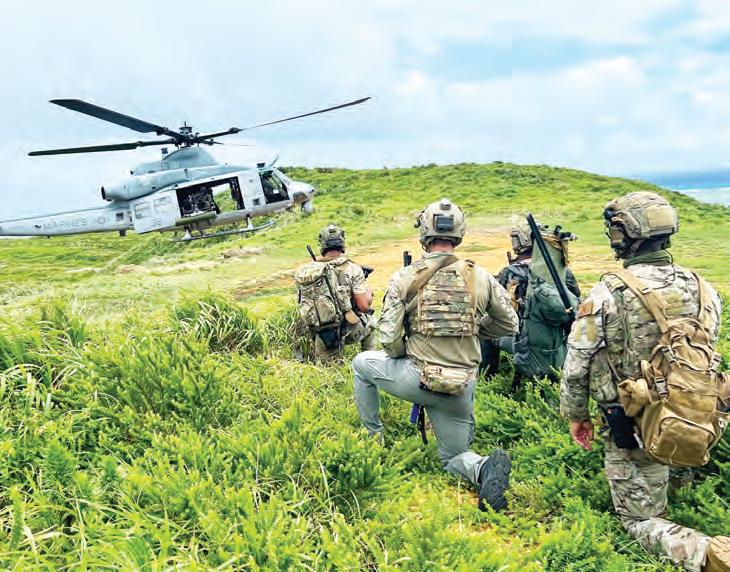
posed of airmen from multiple support specialties. They were joined by pararescuemen from the 212th Rescue Squadron, JB ElmendorfRichardson, and marines from Marine Light Attack Helicopter Squadron 169, MCAS Futenma.
Throughout the week, the joint team tackled realistic and high-pressure training scenarios designed to simulate combat support in forward-operating environments.
One scenario involved a simulated mass casualty rescue: Pararescuemen pulled 14 mock casualties from the water, while MRA airmen worked alongside Independent Duty Medical Technicians
medics exchanged patients between Army, Navy, and Air Force personnel.
to transport and treat simulated injuries including broken bones, burns and chest trauma.
The teams also executed base defense and Tactical Combat Casualty Care drills, conducting perimeter security, care under fire and patient evacuation. Armed with M4 carbines and simulated ammunition, participants trained on close-quarters combat, defensive posturing and medical triage under fire.
“The MRA team exceeded every expectation,” said Tech. Sgt. Michael Espinoza, 18th Wing ACE MRA program manager. “They provided not only AFSC-specific expertise, but also vital
cross-functional support in areas like communications, logistics, medical response, security and contracting.”
By stepping outside traditional job roles and embracing cross-domain responsibilities, airmen are expanding their capabilities and strengthening joint force integration. The result is a more lethal, flexible and resilient U.S. presence in the Indo-Pacific.
“Multi-capable airmen are critical to ensuring Kadena can operate, adapt and lead in dynamic combat environments,” Maysonet said. “Exercises like this ensure we’re ready – not just to respond, but to outmaneuver.”
From Page 1
The delegation began their week at OSI Detachment 804 at Vandenberg Space Force Base where they received mission briefings and participated in a case study focused on unmanned aerial systems (UAS).
The scenario, like a recent case involving a foreign national who flew a drone into restricted airspace during a military satellite launch at the space base, offered a real-world example of how AFOSI coordinates with federal and base security partners to investigate and mitigate emerging threats.
“Safeguarding our installations and national security is at the core of the AFOSI mission,” said Special Agent Michael Wilson, AFOSI Det. 804 commander. “This case study highlighted the coordination and professionalism required to respond to emerging threats.”
The session included discussions on investigative techniques, airspace vulnerabilities and Eyes of the Eagle, a project that uses drones to help monitor the area around launch sites.
“One of the first things I worked on [here] had to do with adversaries targeting space companies,” said Special Agent Dante Tabarracci, AFOSI Det. 303. “It was about removing risks so industry partners could safely support U.S. missions.”
Identifying and disrupting adversarial threats also helps ensure that key defense technologies stay in trusted hands, Tabarracci added.
From Vandenberg, the team traveled north along the Pacific Coast to Silicon Valley where they met with defense industry leaders in Mountain View.
“We wanted to showcase to our allies the partnerships we’ve built with DoD acquisition channels and their most critical emerging companies,” Tabarracci said. “That kind of synergy is essential if we want to outpace them in artificial intelligence, autonomy and cybersecurity.”
Later that day, they
visited SRI and the Hoover Institution, where they participated in a technology protection roundtable led by Dr. Glenn Tiffert, a research fellow and historian of modern China who has written on Chinese influence and academic espionage.
“Partnering with our Polish allies to enhance technology promotion and protection elevates our mutual security and safeguards the freedoms we hold dear,” Tiffert said.
In Menlo Park and Palo Alto, Polish officials saw how Special Agents work directly with research labs, think tanks and private companies to understand vulnerabilities, respond to incidents and build long-term protective strategies.
“Special Agent Tabarracci demonstrated to the delegation the depth of AFOSI’s relationships” Alexander said. “These aren’t one-off meetings” On the final day, the delegation turned its attention to artificial intelligence, one of the Department of Defense’s fastest-growing operational priorities.
At one of their final stops, the team explored how AI tools are being developed to support defense missions, like those involving realtime data processing and enhanced situational awareness in dynamic environments.
According to Alexander, the dialogue on AI underscored the importance of safeguarding innovation while responsibly integrating advanced tools into planning and decisionmaking processes.
The Polish delegation listened closely, their questions sharp and specific. For a country familiar with the threat of Russian aggression, the stakes around emerging technology and national defense are anything but abstract.
Today, Poland fields one of NATO’s largest armies and spends roughly 4.7% of its GDP on defense.
“The industry partners we work with in the Bay don’t just matter to the U.S., they matter to NATO, too,” said Alexander, speaking about both experience in Silicon Valley and allied cooperation in Warsaw. “These tools will shape how we plan, defend and respond.”
The exercise included contested terrain scenarios where Army forces moved equipment across hundreds of thousands of acres at Fort McCoy. Other teams also replicated real combat conditions and flew patients between multiple locations and
“Trauma physicians from the Army, Navy and allied medical forces all perform medicine in a similar fashion,” Codina said. “Our Air Force Reserve medics who are trained in tactical combat casualty care were able to pass those skills onto our joint and allied partners.”
Capt. April Pulver, chief
nurse with the 920th Aerospace Medicine Squadron at Langley Air Force Base, also participated in the exercise.
“When you’re deployed, Reserve Airmen come from various units and stations, and you need to learn how to work as a team,” Pulver said. “I very much learned how to be a part of one team at Patriot Medic 25.”
Patriot Medic 25 dem-

onstrated the Reserve’s unique value in providing experienced medical support globally. In a world where peer competitors threaten global stability, the Reserve’s medical capabilities could determine mission success or failure.
“The reason we do this every year is readiness,” Bartrum said. “We are ready now, anytime, anywhere.”
From Page 4
field hospital. Troops then practiced transporting patients there and delivering medical treatment.
“We learned a lot from this exercise,” said the 352nd SOW parachute rigger. “It is my hope that we will make this
training an annual event so that we can practice our skills for real-world operations.”
Mobility Serpent provides a unique experience to enhance the training and strength of cross-functional teamwork and communication between U.S. and allied forces, keeping Team Mildenhall mission-ready anytime, anywhere.











































ROBINS
Georgia, can deliver critical care: The 78th Healthcare Operations Squadron Biomedical Equipment
Technicians. These tech nicians work behind the scenes to keep every piece of medical equipment, from basic thermometers to sophisticated ventila tors, fully functional and ready where split second decisions make all the dif ference in patient care.
Often working out of the spotlight, BMETs possess a deep understanding of both the technical and clinical aspects of medical equipment. Their expertise is critical to maintaining the health and readiness of airmen, at home and abroad.

“The primary purpose of BMET and healthcare technology management is the safety of patients inside the medical facility,” said Tech. Sgt. Brandon Musgrave, 78th MDG BMET healthcare technology manager. “The primary way that we accomplish that is by maintaining medical equipment from the moment it enters our doors until the day it leaves.”
BMETs tackle a diverse workload, ranging from routine maintenance and calibration to complex
troubleshooting and repair. Their responsibilities include installing and inspecting new equipment to meet stringent medical and technical standards, performing preventive maintenance to prevent breakdowns, calibrating equipment for accurate performance, repairing malfunctions, and conducting safety inspections. Training to become a BMET involves nearly a year of intensive technical instruction that combines classroom learning with hands-on lab
work, located at Fort Sam Houston, Texas.
“What we learn primarily is clinical applications various types of medical equipment and troubleshooting,” Musgrave said. “So it’s a ton of practical application, designed to ingrain that much needed muscle memory in order to diagnose, troubleshoot, and repair equipment under crucial deadlines and hectic conditions.”
The work of the BMETs demands close coordination with a variety of entities, including medical
staff, logistics personnel, medical equipment manufacturers and even other military installations like the 94th Airlift Wing at Dobbins AFB, Georgia.
“We try and do as much in house in our shop with our own tools as we can,” Musgrave said. “But we frequently have to work with manufacturers across the world.”
A crucial aspect of their mission is supporting deployed forces. BMETs provide essential support by ensuring equipment used in field hospitals and
clinics is fully operational.
“We take care of the 94th,” Musgrave said. “They’ve got equipment that is deploying all the time. And the equipment they’ve got is a lot closer to what we would see in the deployed environment, like ventilators and aspirators.”
This operational readiness mindset is key at the 78th MDG to getting service members ready to deploy.
“If, let’s say, the dental clinic’s sterilizers went down, their ability to
get deployers ready to go decreases to zero,” Musgrave said.
The increasing complexity of medical equipment, coupled with difficulties in obtaining proprietary parts, can create challenges for the team.
Nevertheless, the 78th HCOS BMETs remain dedicated to their mission, ensuring the 78th MDG is ever ready to provide the best possible care to Airmen, both at home and deployed around the globe. This dedication isn’t just a matter of technical proficiency; it’s rooted in a profound understanding of the impact their work has on the lives of those they serve.
“For me, it’s being able to see the direct results of my actions,” said Stephen Danko, BMET medical equipment repair technician. “Whether it be gaining a new capability from the medical side or getting a piece of equipment back up and running to have their operations still going, is probably the most satisfying aspect of my job.” It is this attention to detail that proved vital to their recent accreditation from The Joint Commission, a non-profit organization that accredits and certifies healthcare organizations.
“This happens every three years and ensures that we’re delivering healthcare in a safe and legal environment that patients can come in and know that the care they’re going to get is consistent and safe,” said Musgrave.







